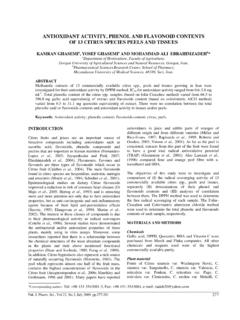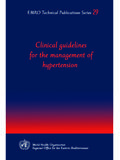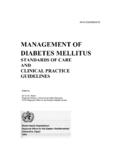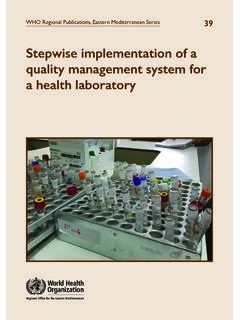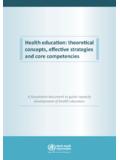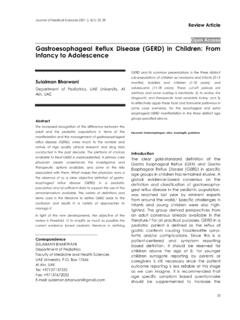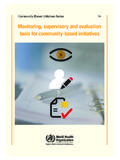Transcription of Cataracts Pathophysiology and Managements
1 The Egyptian Journal of Hospital Medicine (January 2018) Vol. 70 (1), Page 151-154. Cataracts Pathophysiology and Managements Abdulrahman Zaid Alshamrani King Abdulaziz University Corresponding author: Abdulrahman Zaid Alshamrani - - 0500846834. ABSTRACT. Background: Cataract is defined as the loss of lens transparency because of opacification of the lens. Age- related cataract is the most prevalent type in adults, with the onset between age 45 to 50 years, while in children hereditary and metabolic causes are most common. Aim of the work: In this study, our aim was to discuss the epidemiology, Pathophysiology , classification, risk factors, symptoms, and management of Cataracts . Methodology: We conducted this review using a comprehensive search of MEDLINE, PubMed and EMBASE. from January 1981 to March 2017.
2 The following search terms were used: Cataracts , causes of cataract, Pathophysiology of cataract, management of cataract. Conclusion: Cataract is one of the most common causes of blindness worldwide, and more prevalent in developing countries. It is also the most curable cause of blindness which involves a simple surgical procedure. Keywords: Cataracts , causes of cataract, Pathophysiology of cataract, management of cataract. INTRODUCTION. Cataract is defined as the loss of lens This study was done after approval of transparency because of opacification of the lens. ethical board of King Abdulaziz University. Based on the causes, Cataracts can be classified into age-related Cataracts , pediatric Cataracts , and Epidemiology Cataracts due to other causes. Age-related cataract is WHO assessed that around 95 million people the most prevalent type in adults, with the onset are visually impaired because of Cataracts in 2014.
3 Between age 45 to 50 years, while in children Numerous large-scale population-based studies have hereditary and metabolic causes are most common. described that the prevalence of cataract rises with Cataracts occurs more frequently in low to medium age, from 3 9% at age 55 to 64 years to around socioeconomic background individuals, and 92 6% at age over 80 years. Moreover, the presence therefore more common in developing countries[1]. of Cataracts is related with increased mortality, and The assessment and management of cataract is this association might be because of the relationship rather simple where the lens is surgically replaced. between Cataracts and systemic conditions for In this review, we discuss the epidemiology, example type 2 diabetes mellitus or smoking[1]. Pathophysiology , classification, risk factors, The prevalence of Cataracts in the past two symptoms, and management of Cataracts .
4 Decades has been decreasing because rates of cataract surgery have been increasing due to the METHODOLOGY improved techniques. Nevertheless, Cataracts Data Sources and Search terms continue to be the leading cause of blindness in We conducted this review using a comprehensive middle-income and low-income countries search of MEDLINE, PubMed and EMBASE, from responsible for 50% of blindness, while they are January 1981 to March 2017. The following search accountable for only 5% of blindness in developed terms were used: Cataracts , causes of cataract, countries. It is imperative to device a set of policies Pathophysiology of cataract, management of to improve the access of effective ophthalmic cataract. facility and screening, and the quality of Data Extraction management delivered in developing countries[2].
5 Two reviewers have independently reviewed Cataract surgery continues to be one of the the studies, abstracted data and disagreements were most cost-effective treatments and the most resolved by consensus. Studies were evaluated for frequently used procedure in many countries. By quality and a review protocol was followed 2020, over 30 million people yearly worldwide are throughout. predicted to experience cataract surgery. The 151. Received: 04/10/2017 DOI: Accepted: 14/10/2017. Cataracts Pathophysiology and Managements socioeconomic outcome of cataract surgery is large. the axial posterior cortical layer in posterior It permits people to increase their economic yield by subcapsular cataract. In most patients, over one type up to 1500% of the cost of the surgery through the of cataract is found[6]. first postoperative year, nevertheless if left Congenital Cataracts denote a lens opacity untreated it can result in a patient being removed that manifests at birth, while infantile Cataracts from work.
6 In the USA, the yearly expenditure on imply a lens opacity that grows during the first year cataract surgery is US$3 4 billion, although in rural of life. Pediatric Cataracts can be unilateral or China, the cost for a cataract operation can be two bilateral, which depends on the cause. Roughly a times a patient's annual income. Amount of annual third of pediatric Cataracts are hereditary, one-third cataract surgeries differ among countries because of coexist with other ocular anomalies indicating a part variances in accessibility for diagnosis referral, of a multisystem syndrome, and another one-third surgery, and health-care systems. There is also have undetermined reasons. Pediatric causes of gender disparity in cataract treatment coverage in Cataracts include[7]: low and middle-income countries, where men are Idiopathic more probable to have cataract surgery compared to Ocular anomalies women (odds ratio of 1 71, 95% CI 1 48 1 97)[3].
7 Anterior segment dysgenesis syndrome Aniridia Pediatric Cataracts are one of the most Posterior lenticonus frequent causes of treatable juvenile blindness, with Persistent fetal vasculature an estimated prevalence reaching from 1-6 per Posterior pole tumors 10,000 live births. Congenital Cataracts are Hereditary responsible for the majority of pediatric cases and Multisystem syndrome 5 20% of childhood blindness globally, but 22 . 30% of childhood blindness occur in developing Down's syndrome countries[4]. Trisomy 13 15 syndrome Lowe syndrome Pathophysiology Marfan's syndrome The lens is a transparent biconvex object, Fabry disease which causes refraction and focuses light onto the Alport syndrome retina. The human lens is composed of fibers, Myotonic dystrophy enclosed by a thin capsule, and is maintained by Maternal infection zonules on both sides.
8 The lens fibers are made Rubella from the lens epithelium and migrate from the Syphilis margin towards the center. Henceforth, the nucleus Cytomegalovirus infection of the lens is derived from older lens fibers, and Toxoplasmosis newly formed lens fibers are positioned in the Varicella outermost layers of the lens, which is known as the Metabolic disorders cortex[5]. Galactosemia Opacity of the lens is a direct outcome of Wilson's disease oxidative stress. Based on location of opacification within the lens, age-related Cataracts are classified Hypoglycemia into three types: cortical, nuclear, and posterior Galactokinase deficiency subcapsular Cataracts . The lens epithelial cells are Hypoparathyroidism highly metabolically active cells of the lens, Toxic effects undergoing oxidation, crosslinking, and radiation exposure insolubilization.
9 These cells later migrate to the lens Corticosteroids center to form lens fibers that are progressively Trauma compressed and results in lens nuclear sclerosis Cataract can be induced by drugs. Long-term leading to opacity. A cortical cataract is frequently usage of corticosteroids, regardless of route of wedge-shaped, starting at the cortex and covering to administration, is strongly linked with posterior center of the lens. A plaque-like opacity grows in subcapsular cataract development. Other 152. Abdulrahman Alshamrani medications known to encourage cataract o Vitamin E, carotenoids, vitamin B or A, or development comprise phenothiazines, busulfan, antioxidant supplements miotics, and amiodarone. The link between the use o Continuing a protein intake of 100 150 g/day and of statins and cataract is still debated.
10 Other causes vitamin C intake of roughly 135 g/day of cataract comprise mechanical trauma, electrical injury, chemical injury, and ionizing , ultravioletor Heritability of nuclear Cataracts varies from infrared radiation . Changes of the lens also 36% to 48%, while genetic factors are reason for frequently happen secondary to chronic uveitis, 35% of the differences in progression of nuclear Fuchs' heterochromatic uveitis, and pseudo Cataracts . Nevertheless, in contrast with congenital exfoliation syndrome [8, 9]. Cataracts , information about genetic predisposition factors in age-related cataract is relatively rare[13]. Risk Factors Roughly 50% of congenital Cataracts have a The risk factors for cataract development can be genetic origin. Autosomal dominant transmission is classified as [10-12]: the most common, but it can likewise be autosomal Non-modifiable factors recessive or X-linked.
